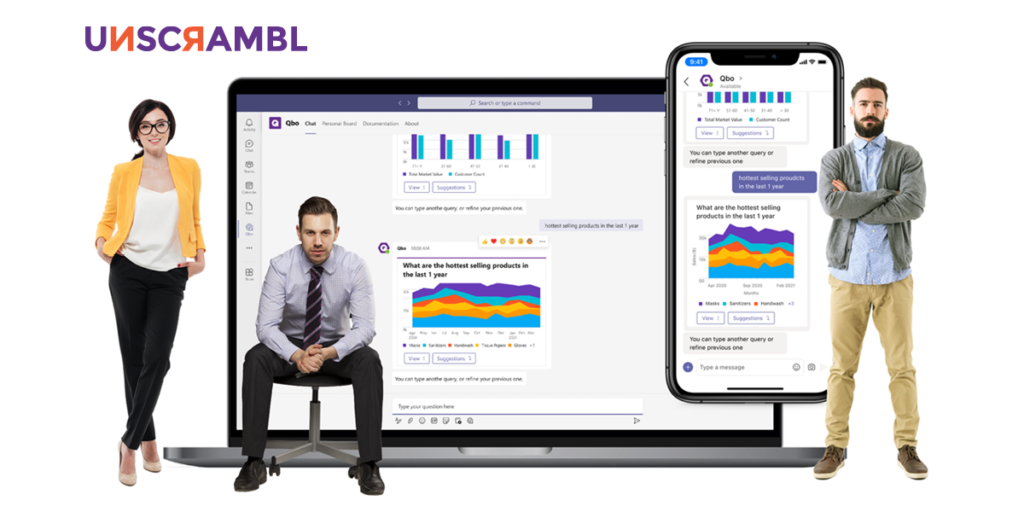 4 Minutes
4 Minutes

Making data-driven decisions a reality.
In the world of digital disruption that we operate in, data has the power to not only alter business models but also drive businesses. Its potential is too obvious to be ignored. ‘Data first’ is an increasingly common descriptor that many companies choose to describe themselves by, the implication being that they are led by data-driven decision-making. In a lot of cases though, it is a mere statement of aspiration rather than a reflection of reality. Most businesses are still at the earliest stages of their data analytics maturity, where the organization is “aware” or “informed” about data, but not driven by it.
It takes changes to the troika of technology, mindset, and culture to make data-driven decisions a reality and entrench it into an organization’s DNA. ‘Data is the pathway to context for business leaders, which is important in enabling decisions’, writes Mike Walsh in his recent article “The Key to Building a Successful Remote Organization? Data”. “Data will never be a substitute for genuine social interactions or company culture, but as we build more global, distributed, and virtual organizations, what it offers is something just as important: a common language for transformation.”
Such a transformation has to be driven from the top a certain clarity of purpose, continuous effort in execution, and constant communication. Some of the world’s biggest companies have benefited from taking this path. Companies also need to adopt a bottom-up approach in parallel to ensure organization-wide buy-in while building appropriate structures for decision-making rights and data governance. It is equally important for organizations to not compromise in the speed of decision making, even as they pursue the Holy Grail of being completely data-driven.
1. Success stories of data-driven cultures
When Satya Nadella took over the reins of Microsoft in 2014, one of his earliest calls to action for the organization was to build a “data culture” and develop “the ability to convert data into the fuel for ambient intelligence”. The new strategic focus on data has resulted in a widely-lauded transformation of an already successful company into one that is now considered nimble and innovative.
Read: 5 Winning Data-Driven Marketing Strategies
In just 23 years of its existence, Netflix pivoted from its core business of DVD rentals to not only become one of the biggest video content streaming services but also establish itself among the top creators of original content. One of the main ingredients contributing to its $20 billion annual revenue in 2019 is data, which forms the basis for almost every decision in the company.
A data-centric approach to business is also what is common to the world’s largest company, Walmart and one of the fastest-growing tech companies from Asia, Grab. Product development, marketing, sales & customer service, supply chain management, accounting & finance, recruitment, and talent retention – each of these functions could be optimized using data to get the best outcomes. It starts with an acknowledgment of the power of data-driven decisions over opinions and an unfailing commitment to implement them, by developing the right culture, building the right structures, and ensuring the appropriate technology infrastructure.
2. Redefining the mindset
An approach that organizations use to bring about rapid change and stimulate growth is to redefine the markets they operate in and reframe their perspectives.
Singapore’s DBS Bank, now considered among the world’s top banks, leapfrogged its rivals in the region with a data-driven digital push with a similar reframing exercise. Instead of looking at its traditional banking rivals, DBS studied how fintech companies that operate with technology and data at their core, worked. The bank altered its perspective of competition too. Their gaze was on digital giants such as Google, Apple, Amazon, Alibaba, and Tencent. ‘The mindset of empowering people with ready access to data and freedom to experiment has been a huge game-changer for the bank, as its CEO Piyush Gupta shares in this interview.
3. Self-governing data is the future
With the explosion of data and companies wanting to democratize the use of data, the complexity of decision making has increased manifold. Handling this ‘decision rights’ challenge well has to be among the top priorities of any business today. In his article in the Harvard Business Review, Michael Schrage recommends the RACI framework (Responsible, Accountable, Consulted, Informed) and a data-driven approach to accord decision rights.
“As organizational decisions increasingly become more data-driven, top managers need to assure that decision rights are data-driven as well. That explains why so many organizations have made data governance a strategic and organizational priority. Instead of more traditional IT governance, which seeks to create greater accountability for IT systems management, data governance recognizes the fact that data is a critical asset.
Creating an accountability structure is one of the key pillars of Adobe’s data-driven Operating Model (DDOM) too. It re-emphasizes the need for business and IT to work together for a successful transformation into a data-driven organization.
4. Always be prudent and practical
Being data-driven essentially means making them faster and better. It is to help businesses get a competitive edge, but there are a couple of rules that any business embarking on this journey should bear in mind.
-
All data is not equal.
Therefore, the extent of value and competitive edge different data delivers will be different. Prioritizing data and insights is a critical management task that requires rigor and discipline.
-
Speed is of the essence.
Businesses cannot afford to wait to get all the data and insights. Some data may not be available before one takes action. Jeff Bezos, one of the most famous data-driven business leaders, while advocating the use of data to the extent possible, recommends a simple framework for decisions that complement management’s intuition with data.
Conclusion
Enabling data-driven decision making is our raison d’etre. The rapid advances in natural language processing and conversational analytics get us closer each day to when all decisions will be data-driven. That’s a new reality and normal we strive for.
Like our post? Share it with your friends, colleagues, or on your LinkedIn profile and tag us.



